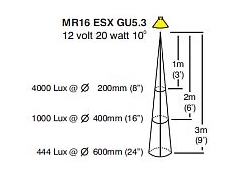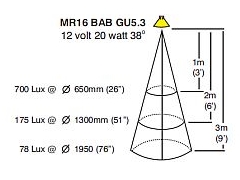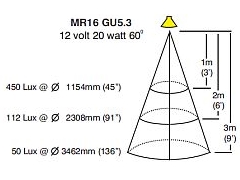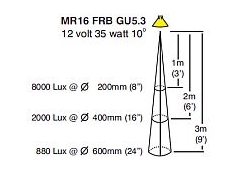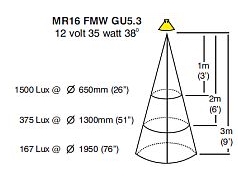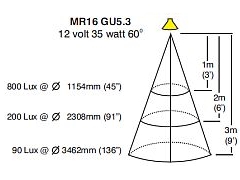What you can light
Generally speaking, if you want to light something, you can with Hunza lights – architectural features, decks, tree trunks, lawns, leaves, flowers, fountains, ponds, pergolas, patios, paths…you name it.
Paint a picture with light and shade
When designing your scheme, try to think of it in its entirety, rather than as separate bits. All the elements should hang together and be in balance. Remember that things visible during the day can be left in darkness, so you have the opportunity to make dramatic changes to your visible landscape.
Less really is more
Shadow is as important to your scheme as light, so don’t try to light everything. Instead, retain some mystery. Also, keep it subtle – very bright garden lighting can look brash and artificial.
Hide your light under a bushel
Hunza lights are handsome, but ultimately it’s the lighting effect you want to see, not the fitting. So wherever possible, hide the light source – behind a shrub, perhaps, a rock, a pot or a wall.
Avoid glare
When it comes to garden lighting, there’s no razzle in dazzle. So try to angle the light beams away from your lines of sight. Where this isn’t possible, glare guards can reduce the dazzle factor.
Placing lights near plants
If you’re installing lights in winter, remember that your herbaceous plants will be growing in the summer. Try to avoid placing lights where they will be swamped by summer foliage.
Experiment with lighting effects
Try throwing shadows onto walls, creating reflections in ponds, or using backlighting to create interesting silhouettes. The possibilities are almost endless.
Wattage and beam angles
The wide choice of beam angles, Wattages, mounts and options such as frosted lenses means you can tailor each light source to create a precise effect. If you need to increase the beam throw of a lamp, try using a 20W lamp with a 10 deg. beam angle, rather than upgrading to a 35W or 50W lamp.
Coloured lamps?
Lamps are available in a variety of colours, although with less choice of Wattage and beam width. Used sparingly they can create interesting effects, but avoid the Las Vegas look.
Changing lamps
When you’re replacing a lamp, check it’s the right Wattage and beam angle. Avoid cheap lamps – they’re a false economy because they have shorter lives and need changing more often. We recommend using lamps with a rating of at least 5000 hours.
Keep your stainless steel stainless
If you opt for stainless steel fittings, regular washing to remove salt spray will prevent staining. There are also cleaning products especially for stainless steel.
Taking care of your cable
Black low voltage electrical cable is fairly invisible when placed on soil, but you can hide it by burying it in an inch or two of soil, or under a mulch. Keen gardeners might prefer to keep the cable visible to avoid accidentally damaging it when digging.
Installing your lighting scheme
We recommend using a qualified electrician to install your lighting, and make sure all the electrical circuits are protected by an RCD. Only use electrical equipment designed for exterior use with the appropriate IP rating, and please don’t even think about protecting equipment with plastic bags or temporary wrappings, rather than proper weatherproof enclosures.
Heat
Halogen light sources do generate a considerable amount of heat therefore precautions should be taken when considering their location, particularly at low level in public areas where children may come into contact. Normally there is always a solutions, therefore, if in doubt please contact your local Hunza distributor for advice.
 Tips & Tricks Guide
Tips & Tricks Guide
